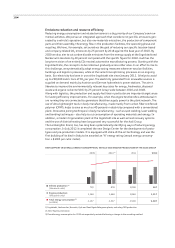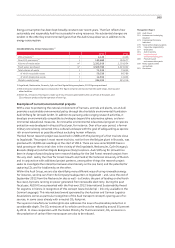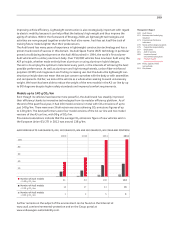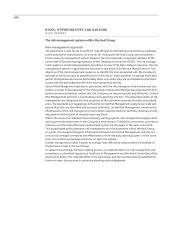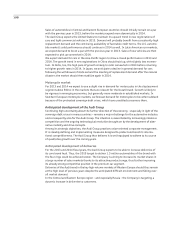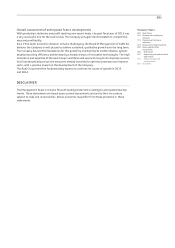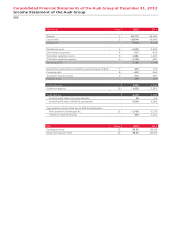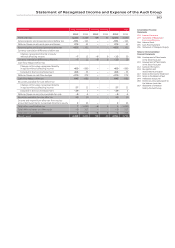Audi 2012 Annual Report Download - page 190
Download and view the complete annual report
Please find page 190 of the 2012 Audi annual report below. You can navigate through the pages in the report by either clicking on the pages listed below, or by using the keyword search tool below to find specific information within the annual report.
193
Management Report
140 Audi Group
151 Business and underlying
situation
173 Financial performance
indicators
176 Social and ecological aspects
190 Risks, opportunities
and outlook
190 Risk report
197 Report on post-balance sheet
date events
197 Report on expected
developments
201 Disclaimer
Individual risks
As an automotive manufacturer with global operations, the Audi Group is confronted with a large
number of risk areas, which are explained in greater detail below. The risks presented refer to
the period 2013 through 2015.
Economic risks
The Audi Group’s business operations are influenced to a high degree by the development of
the worldwide economic framework. The European, Chinese and U.S. sales markets are of key
importance for us. The upturn in economic activity in 2011 lost much of its momentum in the past
fiscal year, though there was considerable variation in economic developments from region to
region. Against the backdrop of this heterogeneous environment, the Audi Group again improved
on the record unit sales figure from the previous year. Its highest sales growth was achieved in
China, Germany, the United States and Russia. By contrast, various European export markets
saw new vehicle registrations decline. In view of the considerable importance of European sales
markets for the Audi Group, this pattern is a major challenge for us. The markets in Southern
Europe in particular have suffered. The position is very different in emerging Asian car markets
and in the recovering U.S. market. These are again expected to deliver high growth rates over the
coming years.
Over and above the economic risks, political intervention in the form of increased customs or
tax barriers and other barriers to trade could aggravate the framework conditions in individual
markets.
We continually monitor sales markets and use extensive risk early-warning indicators in order to
plan production in line with demand. Our aim is to respond flexibly to short-term fluctuations in
demand and elsewhere. We will be able to do so, for example, by transferring production
between the locations under the production turntable principle and by using timebanking
effectively.
The raw materials markets relevant to the Company are permanently monitored in order to secure
adequate supplies of production materials. Other priority concerns are to minimize the cost risks
and to implement comprehensive hedging strategies. A permanent rise in the price of crude oil
not only leads to increased energy and production costs, but also pushes up fuel prices and there-
fore ultimately makes customers more reluctant to buy cars. The Audi Group counters this risk
by swiftly developing and introducing fuel economy technologies for conventional combustion
engines in response to growing calls for efficiency. The Audi brand is already noted for its exten-
sive product range featuring high-efficiency, progressive vehicle concepts that use technologies
from the modular efficiency platform. In addition, there are alternative forms of drive such as
electric and hybrid vehicles that represent a central component of our strategy of diversified
drive principles.
The Audi Group’s global growth has led to a rise in revenue in foreign currency. The continuing
volatility of currency markets is difficult to anticipate and could adversely affect the profit per-
formance of the Audi Group. Exchange rate movements in the euro against the U.S. dollar, the
British pound, the Chinese renminbi, the Japanese yen and the Russian ruble are especially sig-
nificant. In order to protect the Audi Group against these potential risks, we employ appropriate
hedging instruments to an economically reasonable extent. The Audi Group is moreover
in close, continuous consultation with the Volkswagen Group.
Other risk factors such as unforeseeable political intervention in the economy, escalating political
conflicts, terrorist attacks, possible pandemics and natural disasters could have a detrimental
effect on the Audi Group’s business performance by undermining economic activity as well as
international financial and capital markets. The Audi Group addresses risks of this type, for
example by analyzing certain scenarios, drawing up emergency plans and, where appropriate,
taking out insurance cover.



